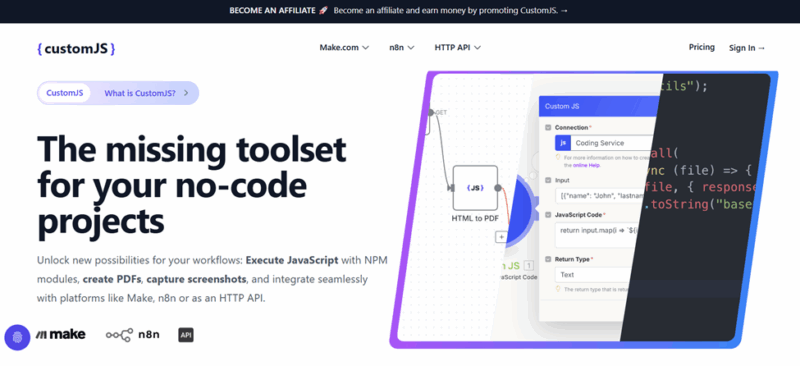
The advent of artificial intelligence (AI) in education has ushered in a new era of personalized learning, transforming traditional teaching methodologies and offering unparalleled opportunities for student engagement and success.
This integration of AI into educational settings is more than just a technological advancement; it’s a revolutionary approach to individualized learning.
As we delve into this topic, we explore how modern schools are embracing AI to redefine the educational landscape, tailoring learning experiences to meet the unique needs and abilities of each student.
AI In Education: Shaping The Future Of Learning
The integration of AI in education signifies a pivotal shift in how knowledge is imparted and absorbed.
This technology is not just about automating tasks; it’s about enhancing the educational experience, providing real-time insights, and facilitating a more adaptive and responsive learning environment.
Positive Ways AI Can Be Used In Education
In exploring the positive impact of AI in education, we uncover a realm where technology is not just an adjunct but a pivotal player in enhancing learning experiences.
AI’s ability to personalize education, provide immediate feedback, and foster interactive learning environments heralds a new chapter in educational methodologies.
It transcends traditional boundaries, offering unique solutions that cater to diverse learning needs and styles.
This section delves into the myriad ways AI contributes positively to education, revolutionizing how knowledge is imparted and absorbed in the digital age.
- Customized Learning Experiences: AI systems can analyze students’ learning patterns, strengths, and weaknesses, offering a customized curriculum that caters to their individual needs. This personalized approach ensures that each student receives attention tailored to their learning style, enhancing their understanding and retention of the subject matter.
- Immediate Feedback And Support: AI-driven platforms can provide instant feedback on students’ work, identifying areas of improvement and offering suggestions for enhancement. This immediate response is crucial in keeping students engaged and motivated, reducing the time lag that often hinders the learning process in traditional settings.

- Enhanced Accessibility: AI tools can assist students with disabilities by offering voice-to-text capabilities, personalized learning aids, and interactive learning environments. These advancements ensure that education is inclusive, breaking down barriers and providing equal opportunities for all learners.
- Data-Driven Insights For Educators: AI can offer educators valuable insights into student performance, enabling them to adjust their teaching methods and materials to better suit their class’s needs. This data-driven approach helps in identifying learning gaps and tailoring instruction to ensure that every student can achieve their full potential.
- Interactive Learning Tools: AI-powered educational tools and games make learning more interactive and enjoyable. These tools can simulate real-world scenarios, making abstract concepts more tangible and easier to understand. This interactive approach not only makes learning fun but also helps in developing critical thinking and problem-solving skills.
Enhancing Teacher-Student Interaction
AI in education also plays a crucial role in enriching the interaction between teachers and students.
With AI’s assistance in administrative tasks and grading, educators can redirect their focus toward more impactful teaching strategies and one-on-one interactions with students.
AI-driven analytics can guide teachers in identifying students who may need additional help, allowing for timely intervention and support.
Furthermore, AI tools can facilitate collaborative learning environments, connecting students and teachers in innovative ways that transcend traditional classroom boundaries.
This enhancement in teacher-student interaction ensures a more engaged and effective educational experience.
Broadening Educational Horizons
The incorporation of AI into education extends beyond the classroom walls, offering opportunities for global learning and cultural exchange.
AI-powered platforms can connect students from different parts of the world, fostering a multicultural learning environment.
This global perspective in education is crucial in preparing students for a more interconnected world.
AI can provide access to a vast array of resources and learning materials, making cutting-edge knowledge and research accessible to students everywhere.
By broadening educational horizons, AI not only enriches the learning experience but also equips students with the skills and perspectives needed in a rapidly evolving global society.
Navigating Challenges And Ensuring Responsible Use Of AI In Education
While AI’s integration into education brings numerous benefits, it also presents challenges that must be navigated with care and responsibility.

Ensuring ethical use, addressing privacy concerns, and maintaining human-centric teaching is pivotal for the successful and sustainable implementation of AI in educational settings.
Ethical Considerations In AI Deployment
Ethical concerns are at the forefront when integrating AI into education.
It’s crucial to develop AI systems that are unbiased, transparent, and respectful of student diversity.
Ensuring that AI algorithms do not perpetuate stereotypes or inequalities is essential.
Schools and developers must work together to create ethical guidelines that govern AI use, ensuring that these tools serve to enhance educational equity rather than detract from it.
Privacy And Data Security
With the vast amounts of data collected by AI systems, privacy and data security become paramount.
Protecting student information from breaches and misuse is not just a legal imperative but a moral one.
Schools must implement robust data protection measures and educate students and staff about data privacy.
Furthermore, it’s important to obtain consent from students and parents for data collection and usage, ensuring transparency in how student data is utilized.
Balancing AI And Human Interaction
While AI can significantly enhance learning, it cannot replace the human element essential in education.
The role of teachers remains irreplaceable, especially in fostering social skills, emotional intelligence, and critical thinking.
Balancing AI tools with human interaction ensures that students receive a well-rounded education.
It’s about integrating technology in a way that complements, rather than overrides, the human aspects of teaching and learning.
Final Remarks
The integration of AI in education marks a transformative period in the history of learning.
It presents opportunities for personalization, global connectivity, and interactive learning experiences.
However, its successful implementation hinges on navigating ethical, privacy, and human interaction challenges.
By striking a balance between technological advancement and the core values of education, AI can significantly contribute to preparing students for a future where technology and humanity converge.
This journey, though filled with challenges, holds the promise of a more inclusive, dynamic, and effective educational landscape for generations to come.










